Table of Contents
Introduction
HR tools are like helpful gadgets for businesses to manage their employees easily.
They’re computer programs that make handling things like hiring new people, managing who’s on vacation, and paying salaries much more straightforward than doing it all by hand.
These tools are essential because doing HR tasks manually takes time and can be tiring. So, having software to handle these jobs is useful for managers.
Businesses pick these tools based on what they need.
Some tools help with everyday jobs, like keeping track of who’s at work, while others focus on bigger things, like finding and welcoming new employees.
HR tools use technology to make work easier for HR people. They save time, cut costs, and help managers handle their teams better.
Understanding Common HR Challenges
Here are some major challenges that HR faces without any professional tools:
1. Sorting through paperwork
Handling paperwork without tools means dealing with stacks of documents for things like hiring new employees, managing leave requests, tracking performance reviews, and more.
It’s like having a huge pile of papers on a desk, which can get disorganized and take a lot of time to find what you need.
It becomes difficult to keep everything in order, leading to mistakes or important papers getting lost in the shuffle.
2. Keeping track of people
Without specialized tools, keeping tabs on who’s working, who’s on vacation, or who needs training becomes a manual process.
HR might rely on spreadsheets or physical schedules, which can easily become outdated or inaccurate.
It can lead to confusion among employees or managers, as they might not know who’s available or when someone is expected back from leave.
3. Communication problems
When HR doesn’t have tools to aid communication, sharing important information across the company becomes challenging.
They might rely on emails or notice boards, making ensuring everyone gets the same information harder.
Some employees might miss updates, leading to misunderstandings or confusion about company policies, events, or procedure changes.
Additionally, HR might want to translate internal documentation into employees’ native languages for better communication.
This ensures that non-native speakers fully understand the information, reducing the risk of misinterpretation. Providing translations can also make employees feel more included and valued, improving overall morale and engagement.
4. Manual calculations
Calculations like figuring out salaries, taxes, and benefits without the help of software can be time-consuming and prone to errors.
Without automated systems, HR might have to do everything by hand, which increases the chances of mistakes in payroll processing, tax deductions, or tracking benefits accurately.
5. Slow processes
Without HR tools, processes tend to take a lot longer.
For instance, tasks like reviewing job applications, scheduling interviews, or handling employee requests are more time-consuming when done manually.
It can cause delays in response times and make it harder for HR to manage their workload efficiently.
5 Tools For HR Professionals Must Have
Here is the list of five types of tools that are a must for every HR professional:
1. Human Resource Information System (HRIS)
A Human Resource Information System (HRIS) is like a big digital filing cabinet that helps HR people organize and manage information about employees.
Think of it as a special computer system that stores all sorts of details about the people working in a company. It keeps track of their names, contact information, job titles, salaries, attendance records, and even their training or performance reviews.
HRIS makes it easier for HR teams to handle this information without using much paper. They can quickly find what they need, update details, and generate reports to help the company make better decisions about its employees.
It’s a handy tool that helps keep everything related to employees organized and accessible in one place.
Here are the top three HRIS tools for you:
1. Workstatus

Workstatus is a comprehensive Human Resource Information System (HRIS) designed to streamline and simplify various HR-related organisational tasks.
It serves as a centralized platform that assists businesses in managing their workforce efficiently.
It offers numerous features to enhance employee management, track work hours, and facilitate HR operations.
Workstatus provides solutions for the following:
Leave Management
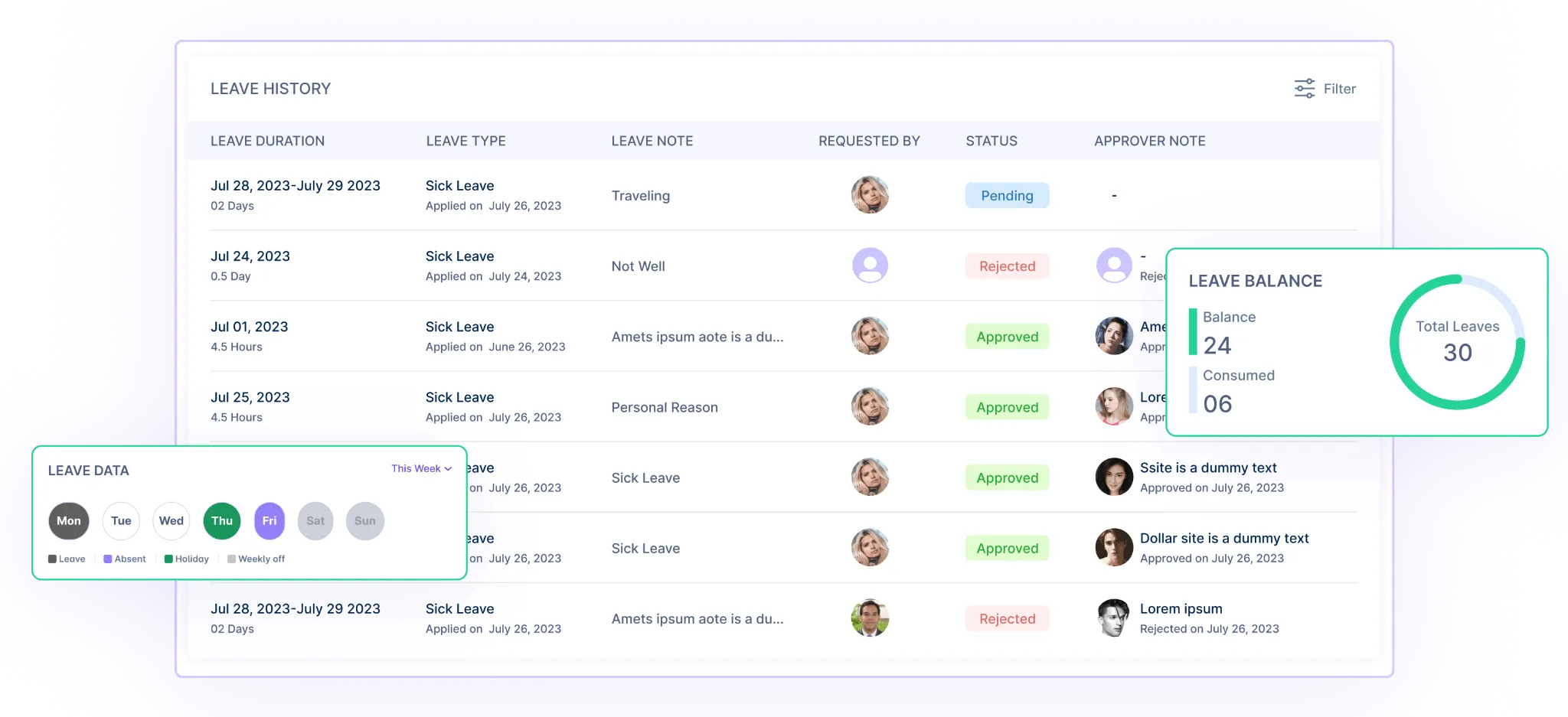
Workstatus provides a Leave Management feature that allows employees to request time off quickly.
It enables them to submit their leave requests, specifying the duration and reason for their absence.
Managers or HR personnel can review and approve these requests within the system.
It helps streamline the process of managing leaves, ensuring proper documentation and tracking of employees’ time off.
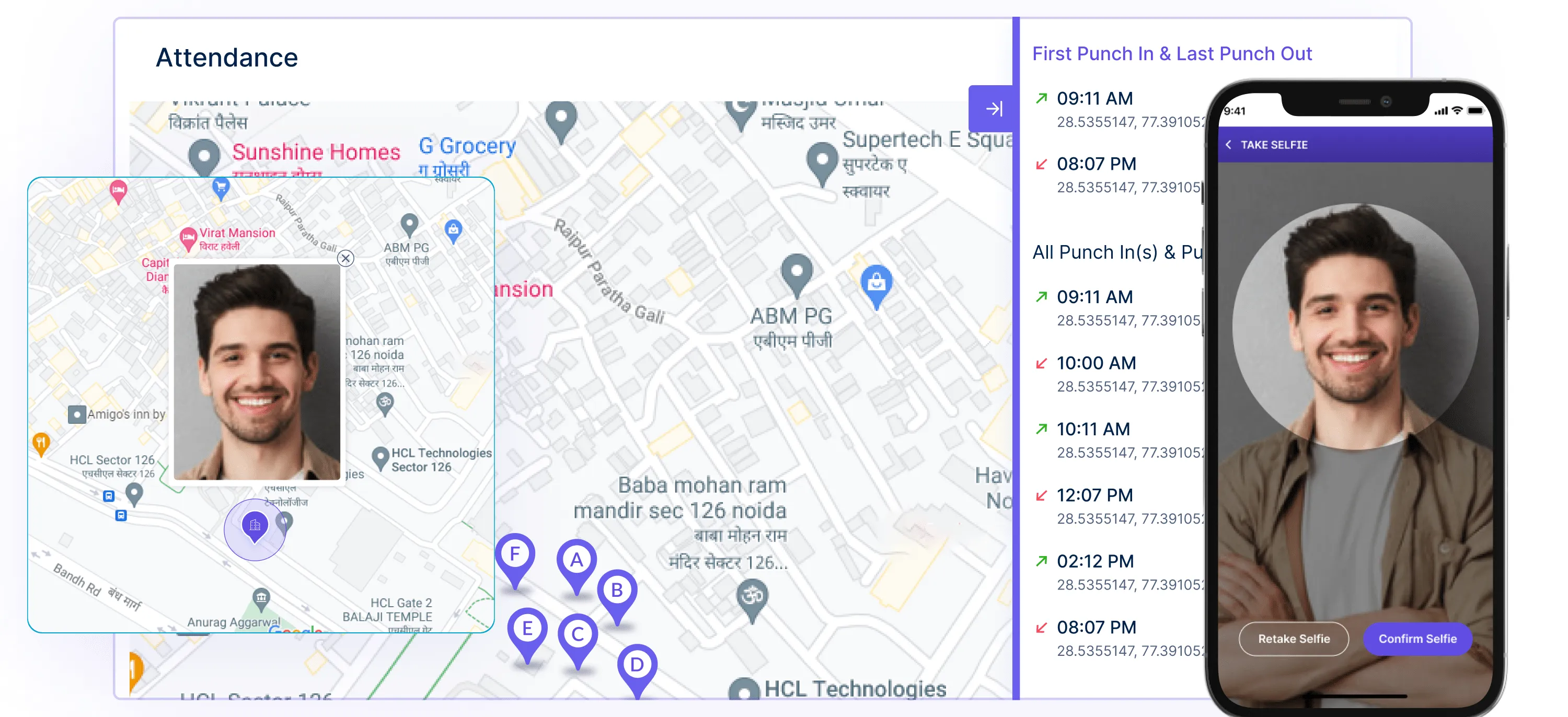
Workstatus incorporates a Selfie Verification feature for attendance tracking.
Employees can verify their attendance using a selfie through the system.
It adds an extra layer of verification to ensure that the right person is clocking in or out, enhancing the accuracy and reliability of attendance records.
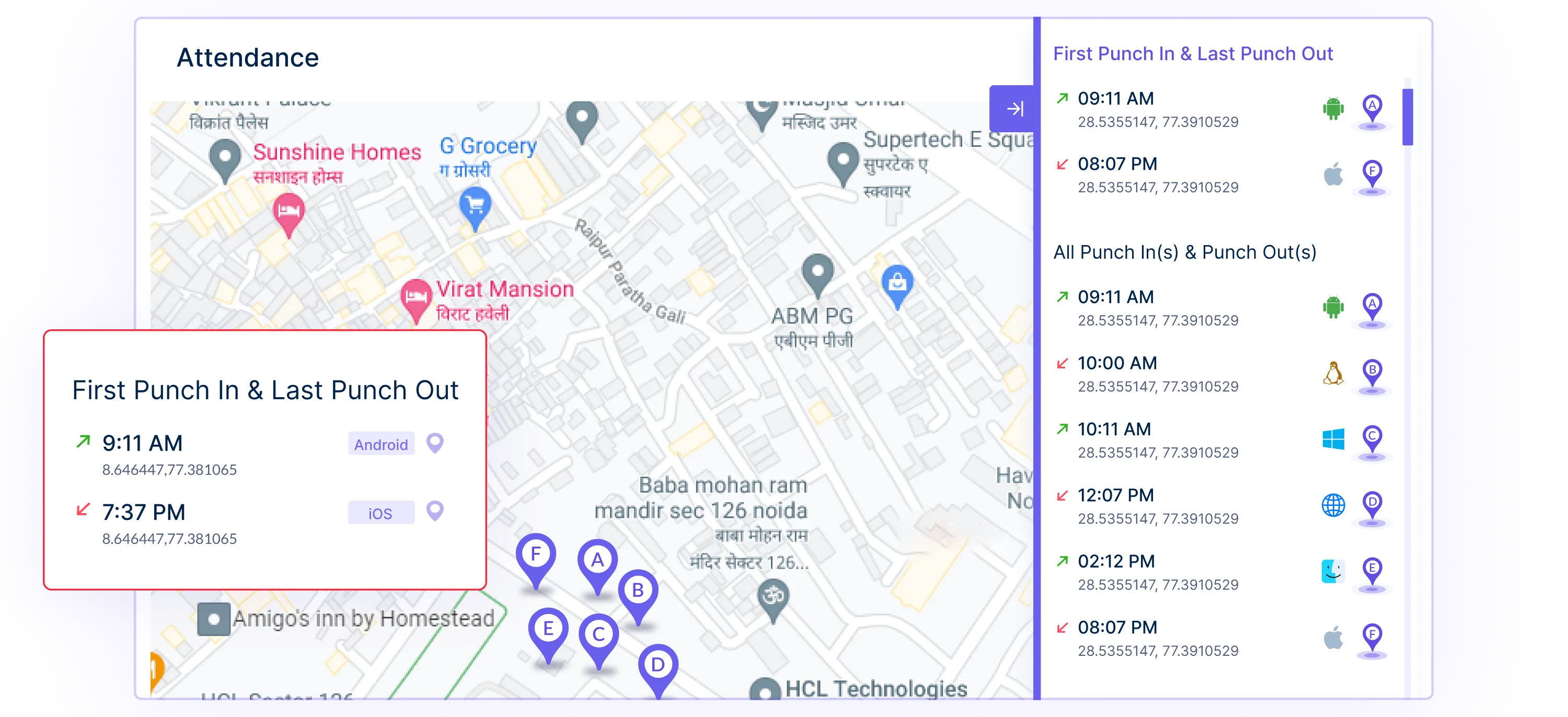
The Geofencing feature in Workstatus allows employers to set geographical boundaries or virtual perimeters.
This feature tracks employees’ locations and activities within designated areas.
It helps monitor remote employees’ movements or ensure that field-based workers are at the designated work sites, contributing to better management and accountability.
Attendance Reports
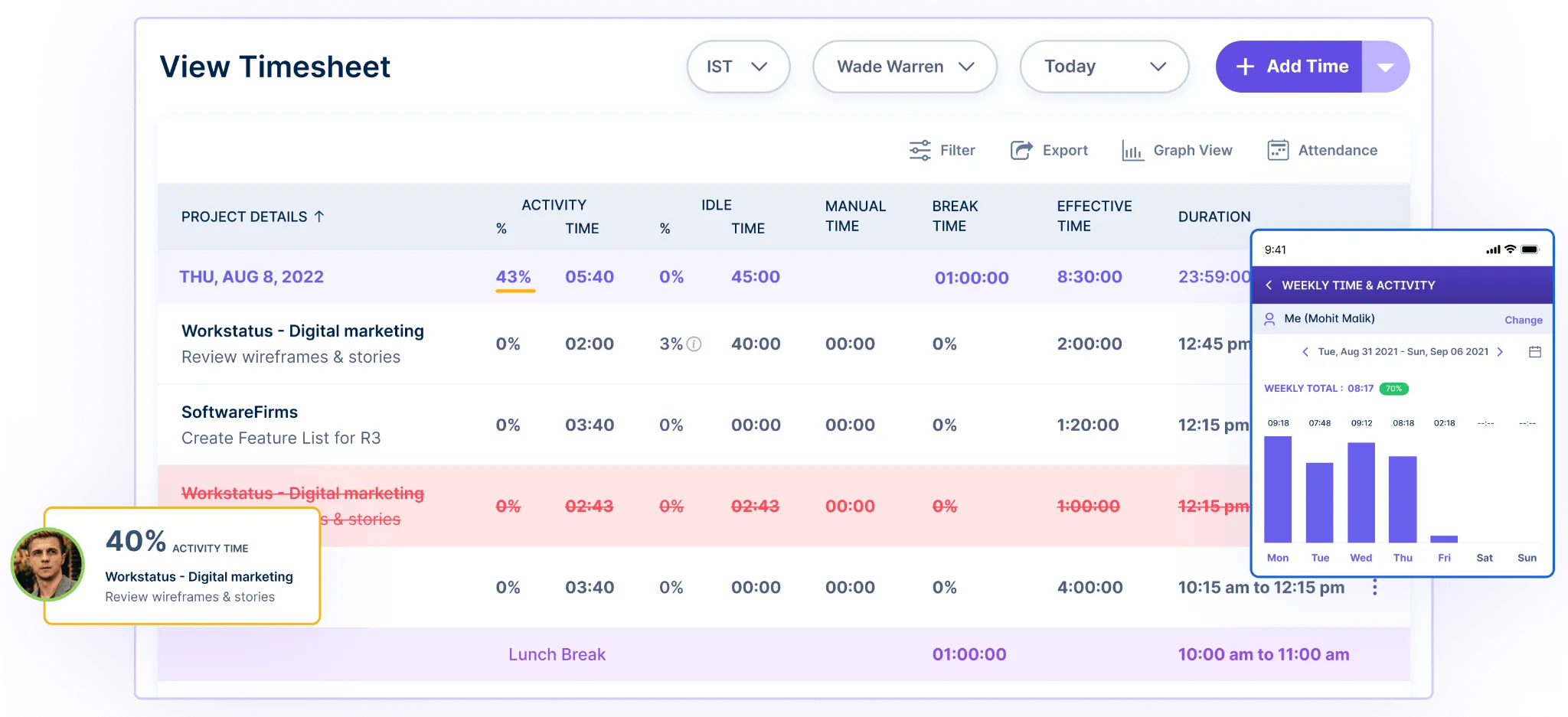
Workstatus offers detailed attendance Reports that compile information on employees’ attendance patterns.
These reports provide insights into attendance trends, such as late arrivals, absences, or overtime hours worked.
HR or management can use these reports to analyze attendance data, identify any attendance-related issues, and make informed decisions to improve workforce management.
2. BambooHR

BambooHR is an intuitive and comprehensive Human Resource Information System (HRIS) specifically crafted to streamline HR processes for businesses of varying sizes.
BambooHR simplifies the complex landscape of HR management with its well-designed and user-friendly interface.
It’s a robust platform empowering businesses to efficiently handle various aspects of employee management, including but not limited to maintaining a centralized employee database, facilitating smooth management of time-off requests, and conducting comprehensive performance evaluations.
Key Features:
- Employee Database Management
- Time-off Tracking and Management
- Performance Management Tools
3. Namely
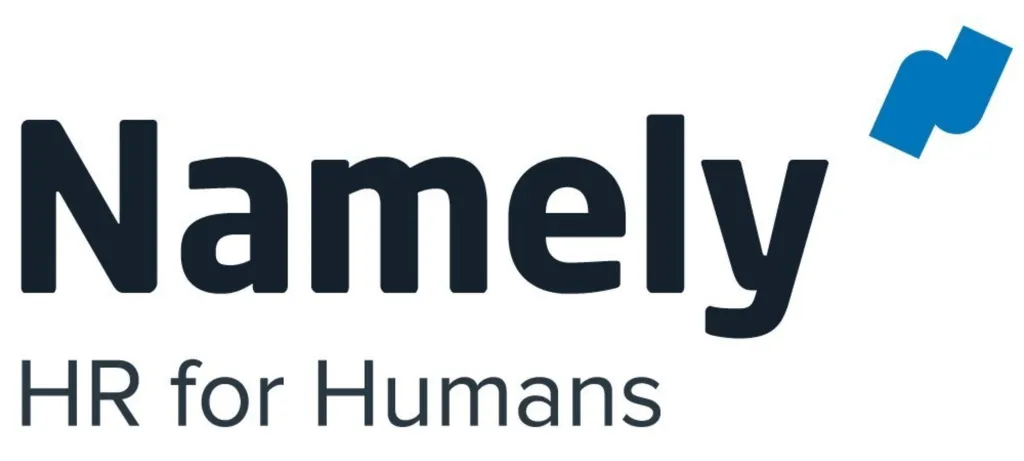
Namely emerges as a highly integrated Human Resource Information System (HRIS) solution, delivering an all-in-one platform catering to mid-sized companies.
This comprehensive platform seamlessly combines essential HR functionalities encompassing HR, payroll, and benefits administration into a unified interface.
Geared towards addressing the unique needs of mid-sized enterprises, Namely offers a cohesive experience by consolidating HR-related tasks and employee information management.
From efficient payroll processing and benefits administration to ensuring compliance with HR regulations and empowering employees through self-service tools, Namely provides a robust framework for managing diverse HR operations.
Key Features:
- Payroll Processing and Benefits Administration
- HR Compliance and Reporting Tools
- Employee Self-Service Portal
2. Applicant Tracking Systems (ATS)
The next type of tool is the Applicant Tracking System (ATS).
An Applicant Tracking System (ATS) is like a smart assistant for companies hiring new people. It’s a computer program that helps businesses manage job applications more easily.
Think of it as a big filing cabinet that stores all the job applications a company receives. It keeps track of each person who applies for a job, stores their resumes, and helps HR people organize and review all the applications in one place.
ATS makes it simpler to post job ads online, collect applications, and track each applicant’s progress through the hiring process.
It’s a valuable tool that helps companies sort through many job applications efficiently to find the right candidates for open positions.
Here are the top three Applicant Tracking System (ATS) tools for you:
1. Greenhouse

Greenhouse is a comprehensive ATS designed to simplify and enhance the hiring process for businesses.
It offers tools enabling companies to create organized hiring plans, manage candidate applications effectively, and gain valuable insights through data analytics to refine recruitment strategies.
Greenhouse provides customizable features to streamline different stages of the hiring process and collaboratively manage the recruitment pipeline.
Key Features:
- Streamlined Job Posting and Candidate Management
- Customizable Hiring Workflows and Interview Plans
- Data-driven Hiring Analytics and Reporting Capabilities
2. iSmartRecruit

iSmartRecruit offers a SaaS-based staffing solution that is both scalable and user-friendly, tailored specifically for the needs of large-scale recruiters, HR experts, hiring managers, and recruitment agencies. Its Applicant Tracking System (ATS) , Recruitment software and Candidate Relationship Management (CRM) software simplify the hiring process for professionals by automating key tasks. This technology enhances efficiency from the initial candidate search to the onboarding of the most qualified individuals.
Key Features:
-
A Recruitment Chatbot offering round-the-clock assistance
-
Online tools for assessing candidates’ skills
-
Social Recruiting for efficient job promotion
-
AI-driven matching of candidates and vacancies
-
Advanced resume parsing capabilities
-
A comprehensive Candidate Management System
-
A feature for conducting video interviews
-
Streamlined candidate onboarding processes
-
Recruitment Analytics for informed hiring choices based on data
3. JazzHR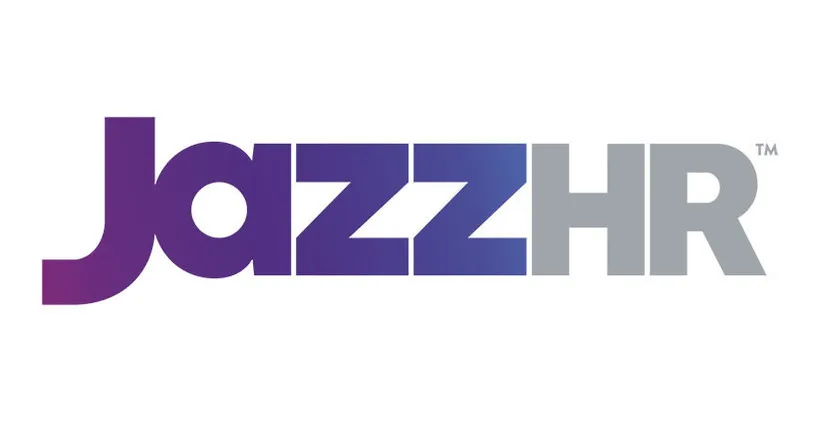 JazzHR is an applicant tracking system designed for simplicity and user-friendliness. It empowers businesses to manage job postings, track candidates, and collaborate effectively in the hiring process.
JazzHR is an applicant tracking system designed for simplicity and user-friendliness. It empowers businesses to manage job postings, track candidates, and collaborate effectively in the hiring process.
JazzHR offers customizable workflows and tools for interview scheduling, allowing teams to work together efficiently in selecting the right candidates.
It caters to small and medium-sized businesses, providing an intuitive platform to streamline hiring tasks and facilitate a smoother recruitment experience.
Key Features:
- User-friendly Applicant Tracking and Job Posting
- Customizable Recruiting Pipeline and Interview Scheduling
- Collaboration Tools for Team-based Hiring Decisions
3. Payroll Management Software
Payroll Management Software is a digital tool businesses use to automate and manage employee salaries, wages, bonuses, and deductions.
It calculates and processes payments accurately, considering taxes, overtime, and benefits.
This software maintains records of employee hours worked, calculates earnings, and generates paychecks or direct deposits.
It helps ensure compliance with tax regulations and provides detailed reports for accounting purposes.
Payroll software simplifies complex payroll tasks, reduces errors, saves time, and enhances efficiency in managing employee compensation.
1. Gusto
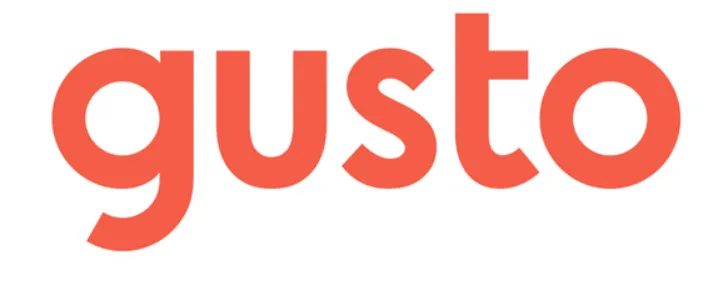 Gusto is a user-friendly Payroll Management Software designed for small businesses.
Gusto is a user-friendly Payroll Management Software designed for small businesses.
It helps with payroll processing, tax filings, and managing employee benefits, offering a simple and intuitive platform for businesses to handle payroll tasks easily.
Key Features:
- Automated Payroll Processing
- Employee Benefits Management
- Simple User Interface
2. Paychex Flex

Paychex Flex is a comprehensive Payroll Management Software that caters to businesses of various sizes.
It provides tools for payroll processing, HR administration, and benefits management and ensures compliance with tax regulations, serving as a one-stop solution for diverse payroll needs.
Key Features:
- Comprehensive HR Solutions
- Tax Compliance Assistance
- Flexible Payroll Options
3. QuickBooks Payroll
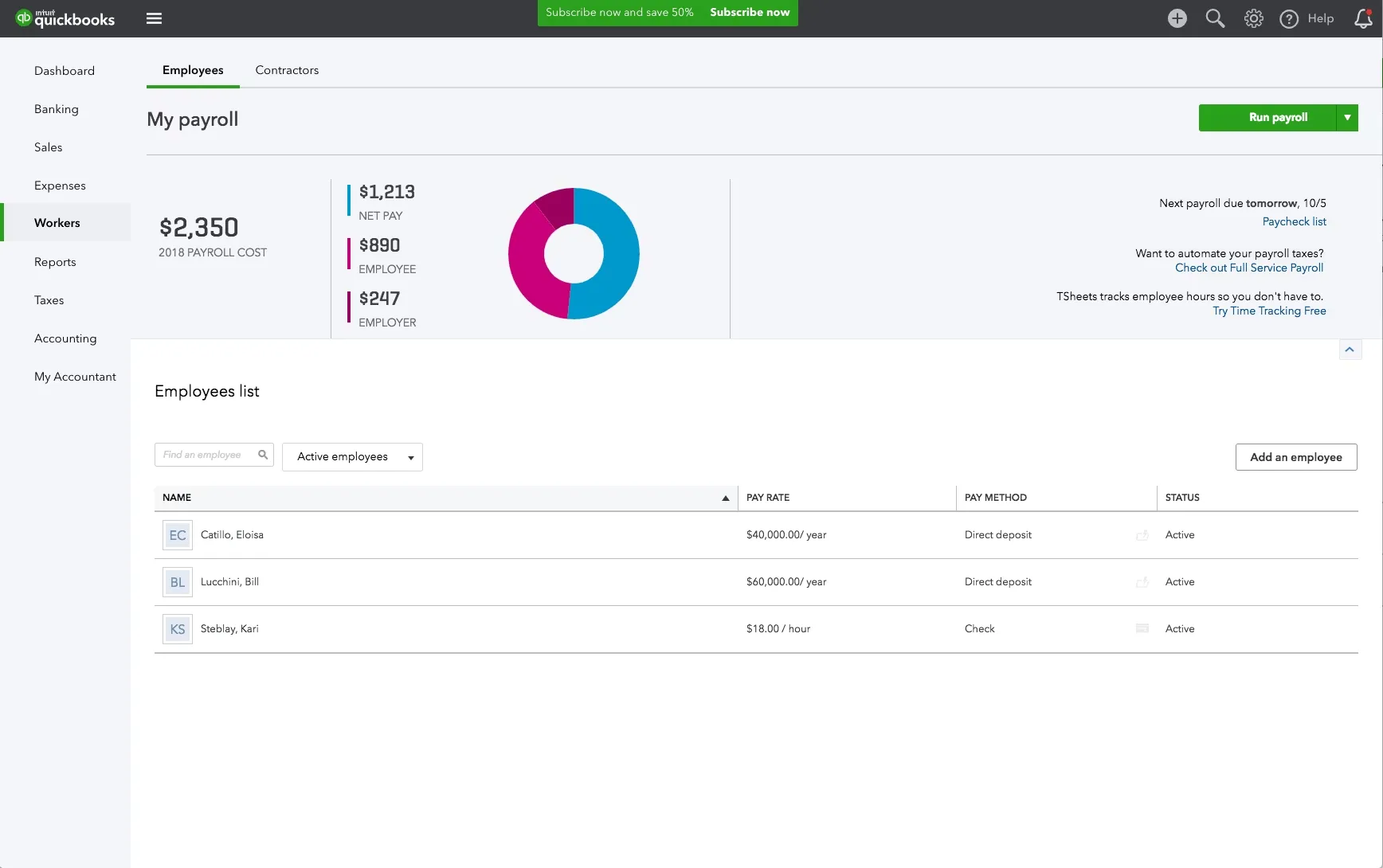
QuickBooks Payroll is an integrated Payroll Management Software that seamlessly combines payroll processing with accounting functions.
It assists businesses in managing employee payments, tax calculations, and benefits administration within the QuickBooks accounting software, offering convenience and accuracy in financial management tasks.
Key Features:
- Integrated Accounting Functions
- Tax Calculation Automation
- Employee Payment Management
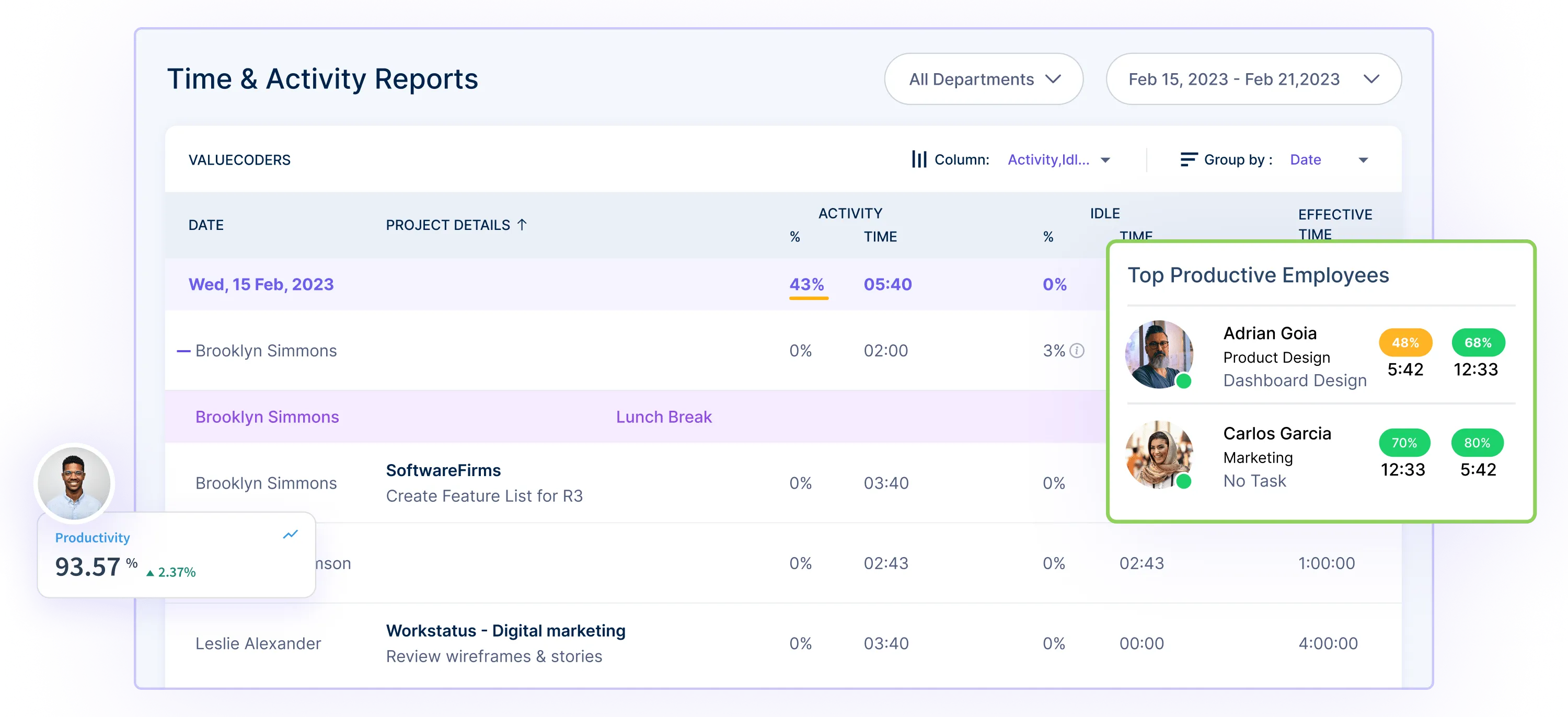
4. Performance Management Software
Performance Management Software helps bosses and employees work together to set goals, track progress, and evaluate how well someone is doing.
It’s a system that allows companies to keep an eye on employee performance, offer feedback, and plan ways for employees to grow and improve in their jobs.
Here are the top three Performance Management Software tools for you:
1. Workstatus

Workstatus is a performance management software designed to help businesses monitor and enhance employee productivity.
It offers tools for tracking work hours, managing tasks, and evaluating employee performance.
Workstatus assists in keeping track of work progress, setting goals, and streamlining communication between managers and employees to improve overall productivity.
Key Features:
- Idle Time Tracker
- Productivity Calculator
- Time & Activity Reports
2. Lattice

Lattice is a performance management software that facilitates ongoing feedback and performance reviews.
It provides tools for goal-setting, continuous feedback, and performance evaluations.
Lattice aims to create a culture of regular communication between managers and employees, promoting organisational transparency and growth.
Key Features:
- Goal-Setting Functionality
- Continuous Feedback Tools
- Performance Review Capabilities
3. Performance Pro

Performance Pro is a performance management software focused on comprehensive performance appraisals and employee development.
It offers tools for conducting thorough performance reviews, tracking competencies, and planning employee development strategies.
Performance Pro aims to help businesses evaluate employee performance accurately and support their growth within the company.
Key Features:
- Comprehensive Appraisal Tools
- Competency Tracking Features
- Employee Development Planning
5. Learning Management System (LMS)
A Learning Management System (LMS) for businesses is like a digital platform designed to help companies train and educate their employees more effectively.
It’s a tool that allows businesses to create, manage, and deliver various training programs and educational content to their staff.
With an LMS, companies can organize and provide online courses, presentations, or resources to teach employees about company policies, job-specific skills, compliance training, or professional development.
Employees can access these materials at their own pace and convenience, usually using computers or mobile devices.
Here are the top three learning management system (LMS) tools for you:
1. 360 Learning
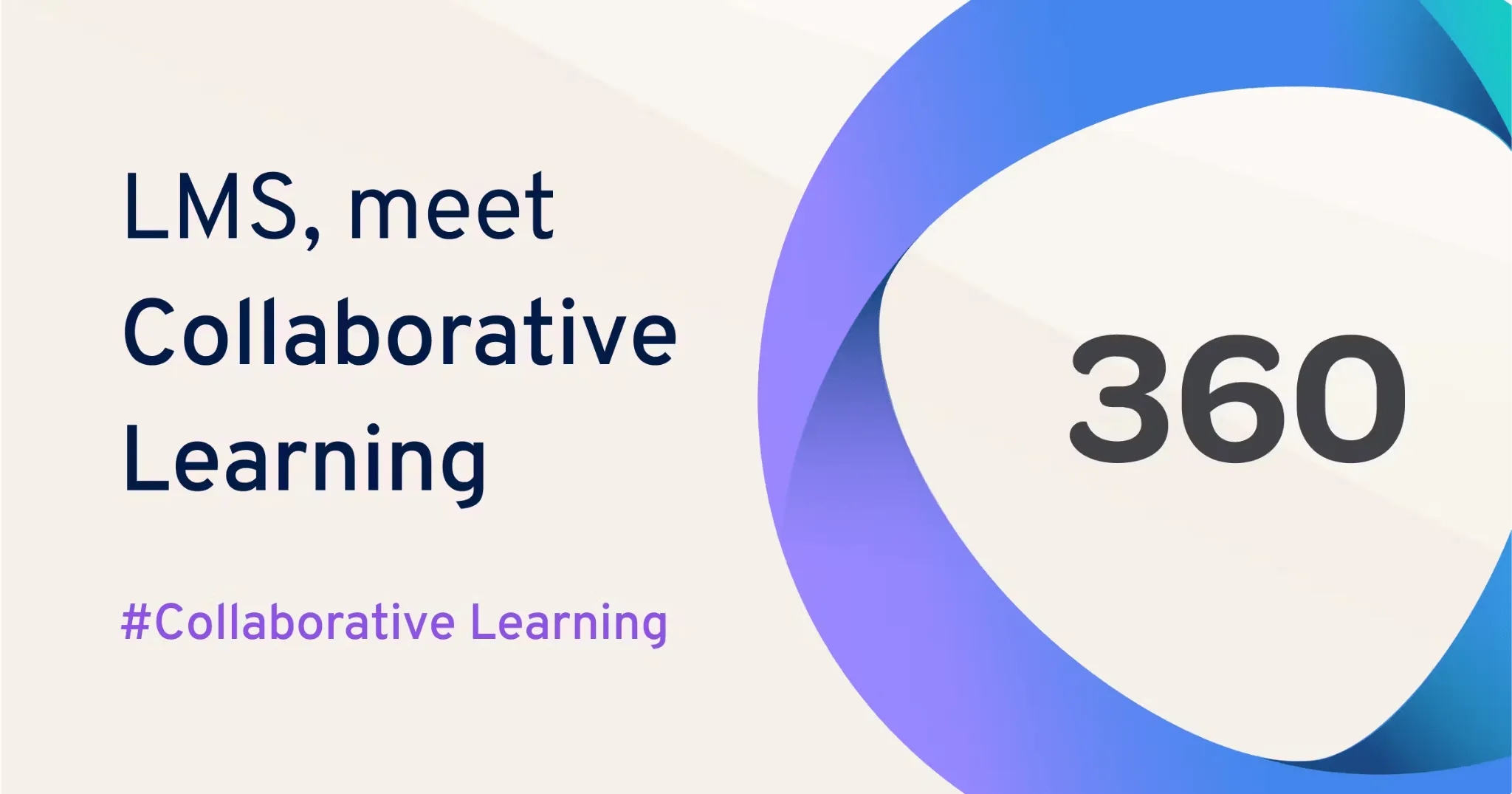
360Learning is an online learning platform designed to help companies train their employees effectively.
It is a digital space where businesses can create, manage, and deliver training courses to their workforce.
This platform allows businesses to develop custom learning programs tailored to their specific needs.
Companies can create interactive courses, share resources, and track employee progress through assessments and analytics.
It provides a collaborative environment for employees to learn and engage with training materials conveniently from their computers or mobile devices.
Key Features:
- Customizable Course Creation
- Diverse Activity Options
- Collaborative Learning Environment
2. Cornerstone OnDemand
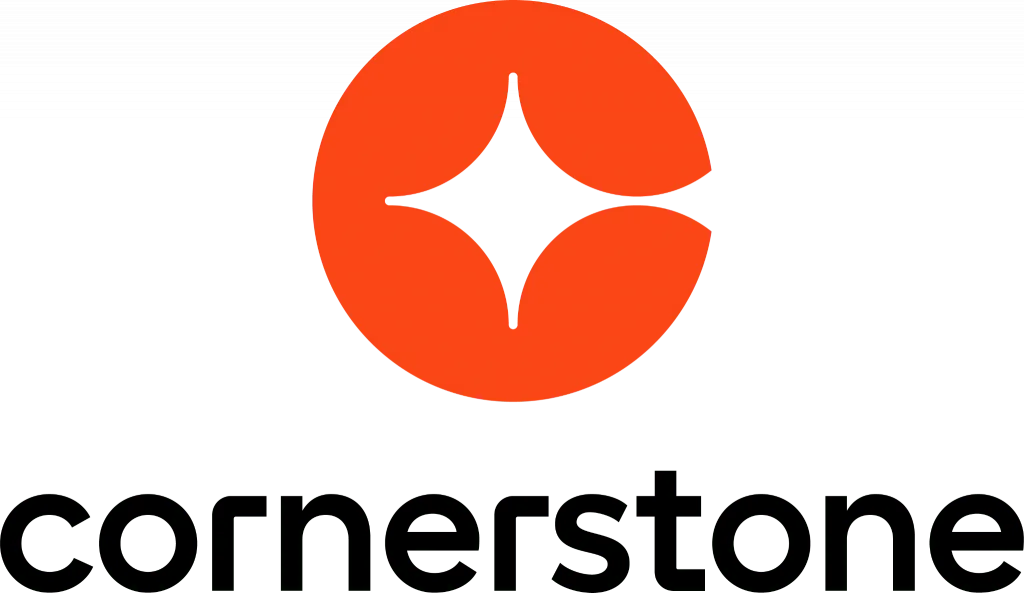
Cornerstone OnDemand is an LMS designed for businesses to train their employees effectively. It offers tools for managing employee learning, creating training content, and tracking progress.
Companies use it to deliver training programs, assess employees’ skills, and develop talent within their organization, making enhancing their workforce’s knowledge and abilities easier.
Key Features:
- Comprehensive Training Catalog
- Performance Tracking Tools
- Personalized Learning Paths
3. TalentLMS
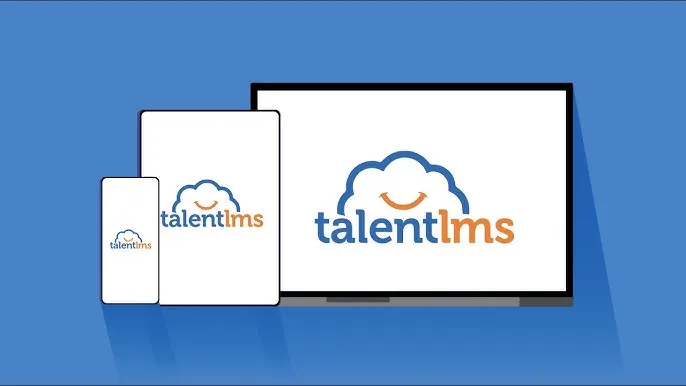
TalentLMS is an easy-to-use LMS that helps businesses create and deliver online courses for their employees.
It’s user-friendly and allows companies to build custom training courses, track progress, and assess employee performance.
TalentLMS is popular for its simplicity and flexibility, making it suitable for various businesses aiming to provide engaging and effective online training to their teams.
Key Features:
- Intuitive User Interface
- Content Gamification Options
- Robust Reporting Capabilities
Future HR Trends 2025
Here are some major future HR trends for 2025:
1. Remote Work Evolution: More companies must embrace and refine remote work policies. They might offer flexible work arrangements, allowing employees to work from anywhere, not just the office.
2. Focus on Employee Well-being: Companies will likely pay more attention to their employees’ mental and physical health. They might introduce wellness programs, mental health support, and initiatives promoting a better work-life balance.
3. Technology Integration: HR will continue to use generative AI services and advanced technology like AI, data analytics, and automation in recruitment, training, and HR operations to streamline processes and make better decisions.
4. Diversity, Equity, and Inclusion (DEI): Businesses will emphasise creating diverse and inclusive workplaces, ensuring fair opportunities for all employees regardless of background.
5. Skills Development: Continuous learning and upskilling will become a priority. Companies may invest more in employee training programs to update their workforce with evolving skills and technologies.
Closing Thoughts
In conclusion, equipping HR professionals with the right tools is crucial for efficient people management.
These five essential tools discussed in the blog empower HR teams to streamline hiring processes, manage employee data effectively, enhance performance evaluations, facilitate employee training, and simplify payroll administration.
By leveraging these tools, HR professionals can optimize their workflows, save time, cut costs, and ultimately contribute to creating a more engaged, skilled, and productive workforce within organizations.













